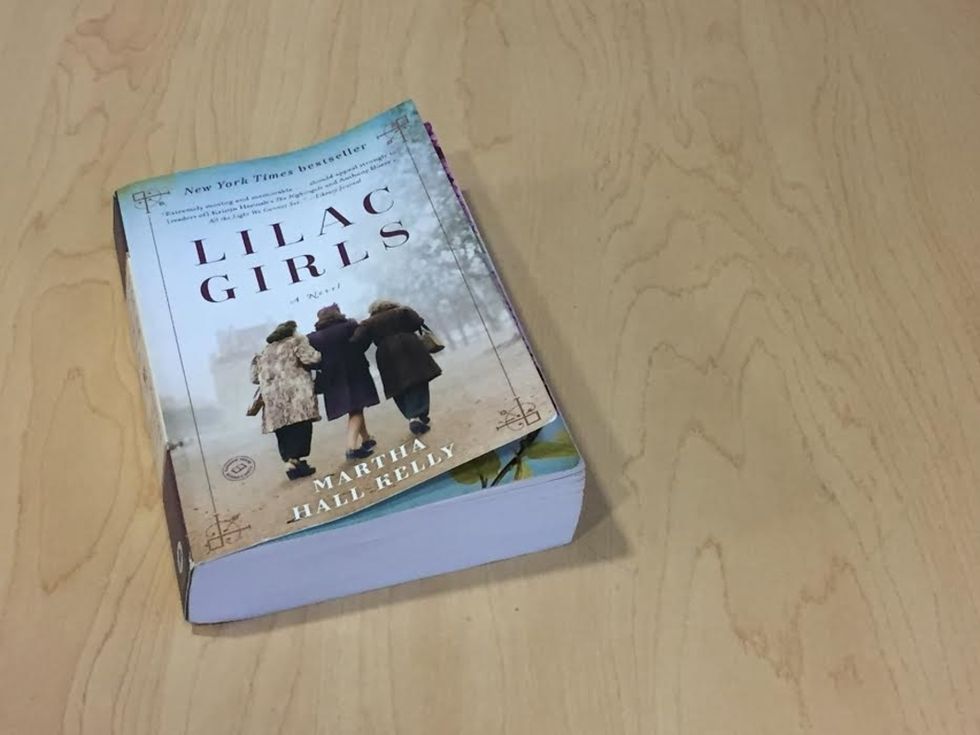A story of three female protagonists living in New York, Poland and Germany during World War II are interwoven to depict perseverance, strength and redemption.
The existence of such a story seems surprising, especially given the breadth of historical accounts of the Second World War. More so, stores are overwhelmingly told from the male perspective, unlike Martha Hall Kelly’s Lilac Girls.
The book focuses on real-life activist Caroline Ferriday, a volunteer for New York City’s French consulate, and Nazi surgeon Herta Oberheuser, who performed experimental operations on Polish women in Ravensbrück concentration camp.
Additionally, the book includes the perspective of fictional character Kasia Kuzmerick, a Polish Catholic teenager deported to Ravensbrück not long after Nazi Germany invaded Poland in September 1939. According to Kelly, Kuzmerick is based on two real-life “Rabbits” who were experimented on during the war while imprisoned in Ravensbrück.
I. Caroline Ferriday
Ferriday’s story, while being the least engaging of the three, indicates her perseverance in providing aid to French orphans during the war and in the postwar era, aid to the “Rabbits.” Ferriday provides hope to those affected by Nazi wartime occupation by donating her time, money, home and clothing items throughout the book.
By doing so, women and children, alike, live better lives despite the unfortunate circumstances that they find themselves. More so, even once the French consulate must shut its doors on families after Vichy France becomes a Nazi puppet state, Ferriday provides her own relief items.
Nonetheless, what makes Ferriday’s story arguably the least engaging of the three is the overwhelming focus on her relationship with French actor Paul Rodierre. While Rodierre’s character is based on a real relationship of Ferriday’s, the focus at certain moments is too great on him. As the novel progresses, her story arc revolves around their affair and her bitterness regarding the obstacles in place that prevent them from being together time-and-time again.
II. Kasia Kuzmerick
When Kuzmerick story begins in 1939, she is 16-years-old and the youngest perspective shown in the book. Despite her youth, she is determined to join the Polish underground forces fighting against Nazi occupation. Her actions inevitably result in herself, her sister and her friend’s sister being deported to Ravensbrück, where they are told political criminals can work and eventually be re-integrated into public life.
Shortly after their arrival, though, she realizes that their stay is not temporary, and the actions taken by the guards and surgeons are done in an effort to study them and, in most cases, ultimately murder them.
Kuzmerick’s story is the most compelling of the three because her character, though fictional, exudes great strength and bravery. Despite being young, she is forced to act as a comfort to her friend’s sister, who is several years her junior. What is more, her eventual separation from her mother and threat of losing her sister make her determined to release the names of guards in Ravensbrück to the general public.
By doing so, she helps bring the guards to justice and later, show that despite the horrors that she witnessed, she can compartmentalize her pain so that others do not have to experience similar atrocities.
III. Herta Oberheuser
When considering the stories of the three women, Oberheuser’s narrative is both the most complex, while also being the least flushed out. Despite being an aspiring surgeon, she recognizes that she is unable to truly study or work in her desired field during the era.
So, in an effort to combat the sexism prevalent in the field of medicine, she answers an ad that results in her arrival at Ravensbrück. There, of 50 doctors, she is the only woman, and her internal dialogue stresses her aggravation when male counterparts do not refer to her by her professional title, and instead as “Frau Oberheuser.”
It is unsurprising that of the three characters, Oberheuser is the easiest to despise, especially given her propensity for articulating antisemitic sentiment. Also, her willingness to operate on the “Rabbits” and later, lack of remorse for her actions easily turns one’s stomach.
Even so, Oberheuser is the character who is given the least amount of attention, yet could benefit from greater focus in terms of her postwar experience. Without revealing too much, the aspect of Oberheuser’s story where Kelly falls short is the lack of address in how the doctor transitions from her high-ranking role to eventually a life of relative freedom.
Despite likely not wanting to give a full voice to a doctor complicit with the horrors of Nazi Germany, the overwhelming plot holes were jarring. More so, a closer look into her “motives” could have allowed for insight into minds similar to Oberheuser’s without offering any justification.
Overall, the women in the story are remarkable outlets into the real-life circumstances of figures during World War II. Although the characters are layered, and certain layers overshadow other more important characteristics, the book sheds light on the role of women during the war, which is refreshing from the homogenized selection of readings on the era.


















